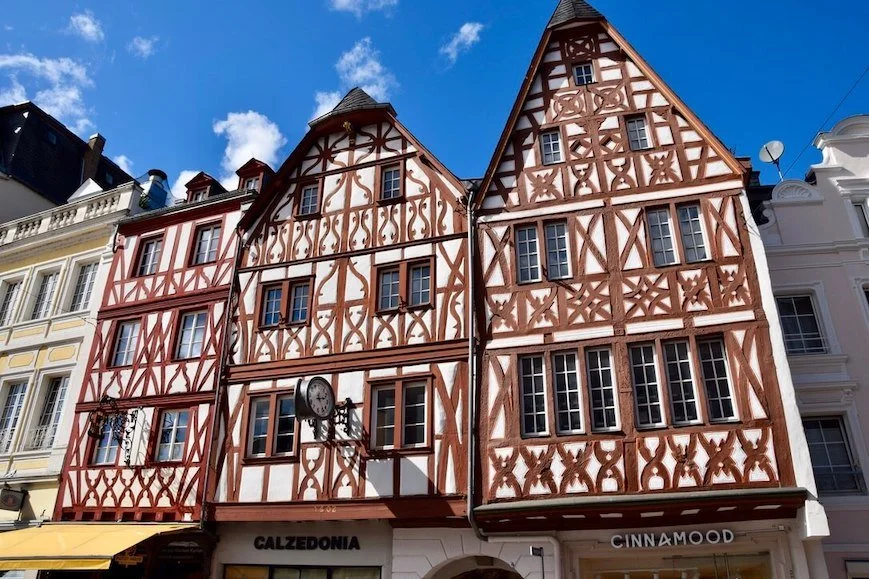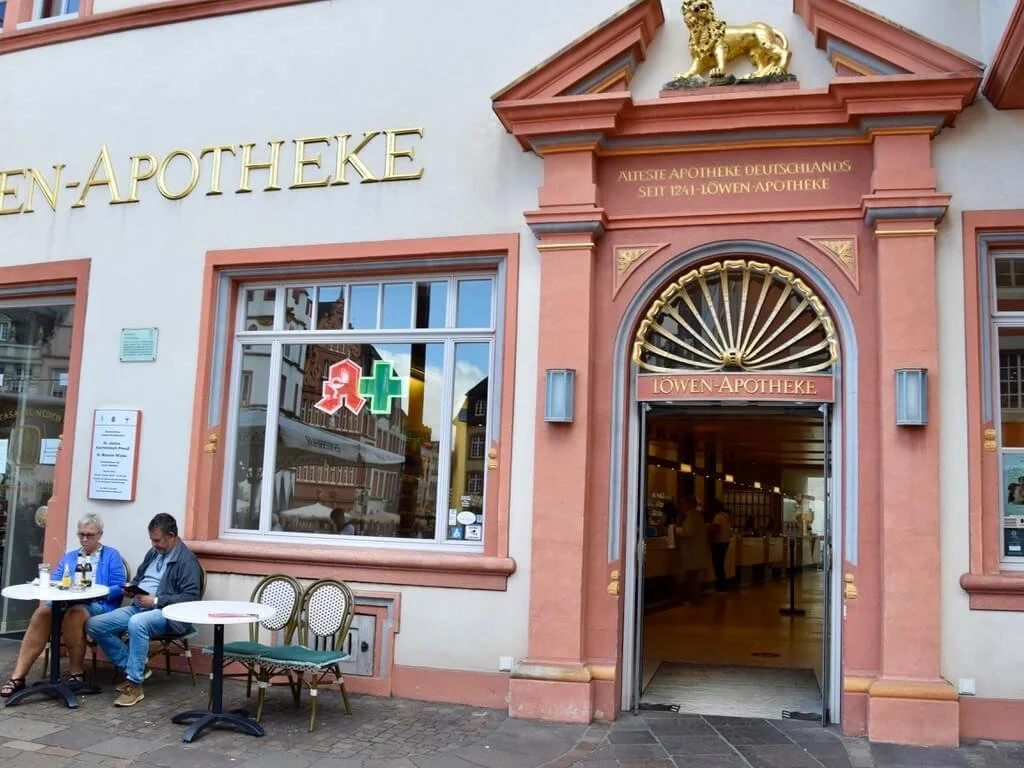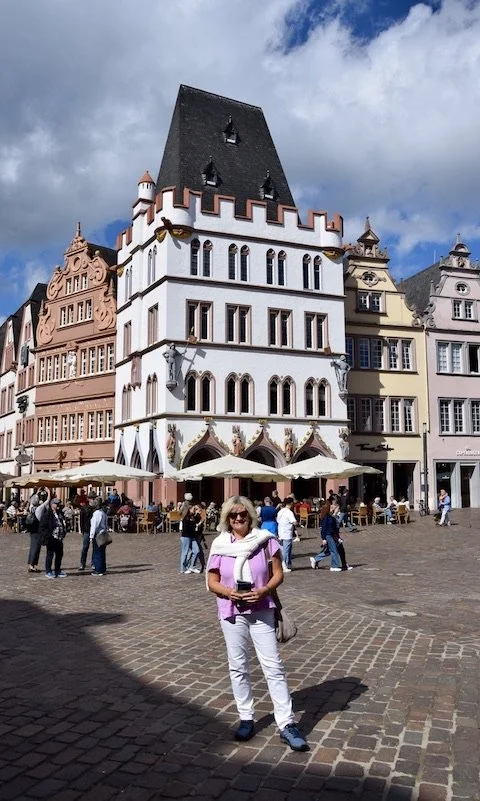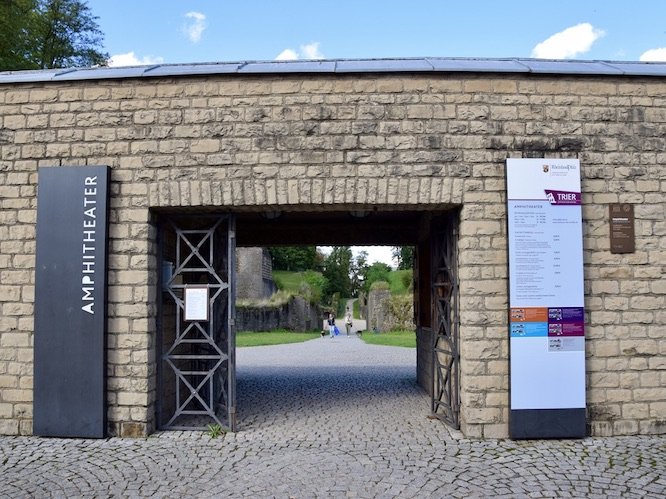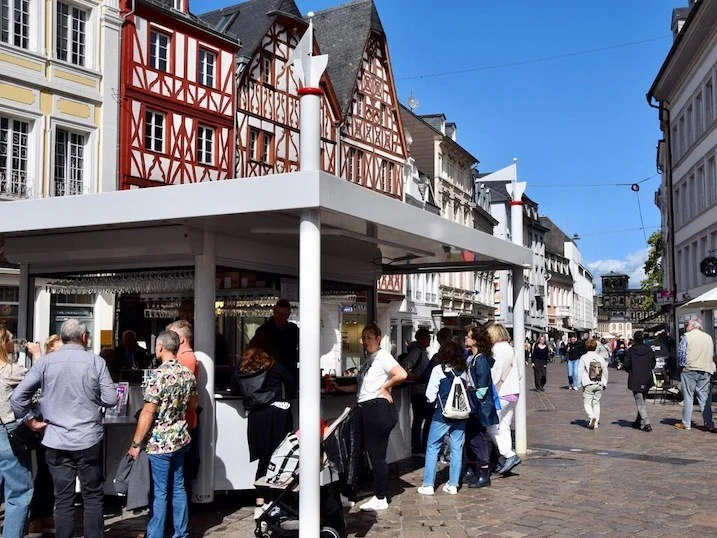Trier in Mittelmosel - the oldest city in Germany
Visit this beautiful city in the heart of the Mosel wine region and marvel at the Trier Roman ruins
The famous ‘Porta Nigra’ in historic Trier, Middle Mosel - Source: Winekeller
Why is Trier Germany famous?
At the start (or end!) of the middle section of Germany’s Mosel wine region, with its world-famous vineyards and stunning scenery, located close to the border with Luxembourg, lies the magnificent and historic city of Trier.
Trier is a city with many accolades, the oldest city in Germany, it is an important site for ancient, historic treasures and boasts no fewer than seven individual world-class architectural monuments, each having UNESCO World Heritage Site status. Of these, the ‘Porta Nigra’, perhaps the best-known symbol of Trier, is the best-preserved city gate from the ancient world.
Trier, a university city, is also a popular and vibrant tourist destination, with a picturesque pedestrian zone and excellent restaurants and being on the River Mosel, it’s a top location for exploring the beautiful Mosel wine region.
Read on for our guide to discovering Trier!
The Mosel vineyards - Mittelmosel / Middle Mosel
The beautiful Middle Mosel wine region close to Trier - Source: Winekeller
The 120km section of the Mosel between Trier in the south and Reil in the north, is called the Middle Mosel region. This section of Germany’s Mosel wine region is where many famous Mosel vineyards and wineries are located - it’s also a beautiful stretch of the River Mosel, where it flows between the low mountain ranges of Eifel and Hunsrück.
The famous and exceptional vineyards around the Mosel wine villages of Piesport and Trittenheim are within easy reach of the city of Trier, but so too are the smaller Mosel wine regions of Saar and Ruwer. This is also a factor explaining Trier’s popularity - it makes for a great base from which to discover Mosel Riesling wine. If you add to this the fact that the vineyards (and airport) of Luxembourg are close by - and the border with France too, then it’s the perfect wine tourism destination!
Discover more about the Middle Mosel and its different wine regions here.
Trier history
Trier lies at the heart of Europe, where the countries of Germany, Luxembourg and France converge. It was founded in the 16th century BC during the reign of Roman Emperor Augustus and was called "Augusta Treverorum". Much evidence of its cultural heritage and its Roman past are visible throughout the city today, from its historical buildings, the magnificent facades, the narrow alleyways and the spectacular gardens.
Trier’s impressive medieval heritage is also very visible with monuments including ‘St. Peter's Cathedral’ – the oldest church in Germany – and the early-Gothic ‘Liebfrauen Basilika’.
Things to do in Trier
Trier is best known for its UNESCO World Heritage sites and it’s really easy to experience them even if you don’t have too much time and just wish to wander around the city by foot.
However Trier is also a thriving university city with diverse nightlife, a very good shopping centre, a large selection of bars and a thriving culinary scene, with modern cuisine inspired by nearby Luxembourg and France.
UNESCO historic sites
Trier’s Dom - St Peter’s Cathedral and next to it the Church of our Lady- Source: Winekeller
A good tip is to start your visit in the central pedestrianised area, where in addition to viewing some of the amazing, historic UNESCO sites which are located around here, you can also enjoy the vibrant shopping scene and admire the beautiful buildings and façades around the main square, the Hauptmarkt.
We started our city visit in the Hauptmarkt with a coffee, before we headed off on a walking tour around the city which included all of the UNESCO sites. Note, we didn’t have time to visit any of the sites in depth, but depending on your interests you can plan your city tour accordingly.
We enjoyed a lovely stroll through the pedestrianised area and headed first to Trier’s most famous historic monument, the Porta Nigra, the huge Roman city gate. The ‘Black Gate’ is the best preserved Roman city gate north of the Alps and the first stone was laid in AD 170.
From here we then made our way back down towards Trier Dom, the impressive St. Peter’s Cathedral, the oldest church in Germany. The oldest central section dates back to the 4th century, but today visitors can witness a representation of a range of different European architectural styles, where elements have been added over the centuries. The most precious relic in the cathedral is the Holy Robe, which is said to have been worn by Jesus Christ during his crucifixion.
Also take time at the cathedral to enjoy the beautiful Domfreihof, the huge square in front of the cathedral.
Just down from the cathedral you can then visit the next UNESCO site, the Liebfrauen-Basilika - the Church of Our Lady - the earliest Gothic church in Germany, dating back to the 13th century.
A short walk takes you to another historic church, the Konstantin Basilika - the Basilica of Constantine, the site of the throne room of Emperor Constantine the Great in the 4th century.
From here we made the short walk away from the pedestrianised zone to the Roman Amphitheatre, where you can visit the incredible elliptical structure which ranks 10th among the world’s largest preserved Roman amphitheatres.
Next on the list, the Imperial Thermal Baths, a spectacular Roman bathing complex and accessible underground canal/sewer system dating back from the 4th century.
Again, a short walk from here takes you to the Barbarathermen, dating from the 2nd century and the largest Roman bathing complex in the Roman Empire outside of Rome, stretching over an area of some 42,000 square metres. Close to the Barbarathermen is Trier’s Roman Bridge, the oldest bridge north of the Alps, where the pylons date back from the 2nd century and the arches were built in 1717/18.
The Imperial Roman Baths, Trier - Source: Winekeller
Trier museums
There is no shortage of excellent museums in Trier, including the City Research Library Treasury ( Schatzkammer der Stadtbibliotek), where priceless treasures are held, the Karl Marx museum, where you can learn everything about the life and beliefs of Karl Marx who was born in Trier and the Rheinland Federal State Museum, one of the most prominent archaeological museums in Germany.
Wine and dining in Trier
There are some great locations to sample Mosel wines, including Weinstube Kesselstatt, located across from the Liebfrauen-Basilika and directly opposite the Trier Dom in the Domfreihof square is Restaurant Schlemmereule, where the wine list includes over 200 wines from the best Mosel wineries. Das Weinhaus, near the Karl Marx house/museum is also a great location to sample the local wines.
Note - we highly recommend visiting the Wine Stand/Weinstand in the centre of Trier in the Hauptmarkt, where regional winemakers present their wines from March to November.
There is also no shortage of top dining options in Trier, including Michelin starred and Gault Millau rated restaurants.
See here for accommodation in Trier;
See here for Trier group tours;
For more information about visiting Trier, see VisitMosel and Mosel Inside.
Conclusion and personal highlights
We only spent half a day in the Mosel Valley’s Trier, but were delighted to have been able to discover this beautiful and historic city so easily by foot, experiencing all of the major sites and soaking up the lovely atmosphere. Trier is a really friendly, lively city, with a wealth of history and historic monuments to discover. If you love Roman and Medieval history, as well as great wine and food then this is a German city to have on your list!

